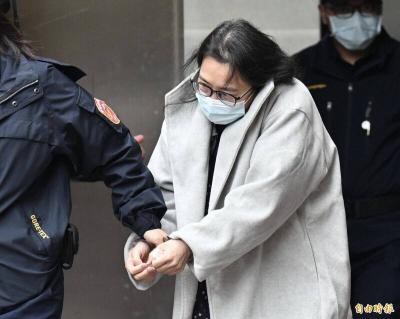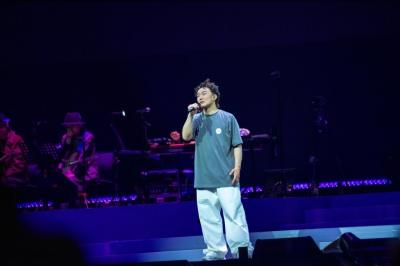Government-funded videos marking the 70th anniversary of the end of World War II portrayed a “historically inaccurate” version of the transfer of Taiwanese sovereignty after the war and failed to review the history “from a Taiwan-centered perspective,” a National Chengchi University professor of Taiwanese history said yesterday.
As part of the government’s year-long plan to publicize the role of the Republic of China’s (ROC) armed forces and government in World War II, five videos commissioned by the Ministry of Foreign Affairs were posted on the “Trending Taiwan” YouTube channel, leading to debate among people who watched them.
The university’s Graduate Institute of Taiwan History chair Hsueh Hua-yuan (薛化元) said that the government reviewed history “through the lens of the ROC [as opposed to that of Taiwan].”
“I have no problem with that, except some parts of the videos were not historically accurate,” Hsueh said.
“The problem is, with regard to the history of Taiwan, what was portrayed was completely wrong,” Hsueh said.
The series of five videos, each about five minutes long, begin in the first video, Settlement, Colonialism and Modernity, with a timeline of Taiwanese history starting in the mid-17th century — when Han Chinese moved to Taiwan and the nation was incorporated into the Qing Dynasty empire — and spanning to the present.
The other four videos portray the ROC leading China to victory over Japan, saying that the ROC is owed a debt of gratitude for its “unequal contributions” to the defeat of the Axis powers and for supporting the end of foreign empires in Asia.
The videos say that World War II would have taken a different course without the ROC’s contributions.
They say that “the ROC was the key force behind the Allied victory over Japan.”
Hsueh said the videos’ repeated mentioning of the Japanese Instrument of Surrender being handed over to Chinese General Ho Ying-chin (何應欽) in 1945 to justify the return of Taiwan to the ROC was “historically inaccurate.”
The document clearly states that Ho, as a representative of Chiang Kai-shek (蔣介石), accepted the Japanese surrender on behalf of the Allied powers, not China, Hsueh said.
“If the government insists that the Japanese Instrument of Surrender effected a transfer of [Taiwanese] sovereignty, does it also claim sovereignty over northern Vietnam, as it was also listed in the document?” Hsueh said.
Neither the Japanese Instrument of Surrender, the Cairo Declaration nor the Potsdam Proclamation are recognized by international law as legal documents to transfer the nation’s sovereignty to the ROC as the videos claim, Taiwan Association of University Professors secretary-general Hsu Wen-tang (許文堂) said.
Both Hsueh and Hsu criticized the omission of events depicted in the first video, including the 228 Incident in 1947, the White Terror era from 1949 to 1987 and other major events of importance to Taiwan.
As of yesterday, the third video in the series, featuring National Chengchi University assistant professor of history Joe Eaton explaining why the ROC is “owed a debt of gratitude,” was the most viewed at 3,536, with 115 comments, 110 likes and 91 dislikes since its release on Wednesday.
The third video sparked heated debate among people on social media.
Ministry spokesperson Anna Kao (高安) said the videos’ scripts were written by the ministry after consultation with experts and academics.
The videos are to be officially launched at events that are to be attended by descendants of World War II heroes during their visits to Taiwan next month and in September, Kao said.

Former president Tsai Ing-wen (蔡英文) on Monday called for greater cooperation between Taiwan, Lithuania and the EU to counter threats to information security, including attacks on undersea cables and other critical infrastructure. In a speech at Vilnius University in the Lithuanian capital, Tsai highlighted recent incidents in which vital undersea cables — essential for cross-border data transmission — were severed in the Taiwan Strait and the Baltic Sea over the past year. Taiwanese authorities suspect Chinese sabotage in the incidents near Taiwan’s waters, while EU leaders have said Russia is the likely culprit behind similar breaches in the Baltic. “Taiwan and our European

The Taipei District Court sentenced babysitters Liu Tsai-hsuan (劉彩萱) and Liu Jou-lin (劉若琳) to life and 18 years in prison respectively today for causing the death of a one-year-old boy in December 2023. The Taipei District Prosecutors’ Office said that Liu Tsai-hsuan was entrusted with the care of a one-year-old boy, nicknamed Kai Kai (剴剴), in August 2023 by the Child Welfare League Foundation. From Sept. 1 to Dec. 23 that year, she and her sister Liu Jou-lin allegedly committed acts of abuse against the boy, who was rushed to the hospital with severe injuries on Dec. 24, 2023, but did not

Taiwanese indie band Sunset Rollercoaster and South Korean outfit Hyukoh collectively received the most nominations at this year’s Golden Melody Awards, earning a total of seven nods from the jury on Wednesday. The bands collaborated on their 2024 album AAA, which received nominations for best band, best album producer, best album design and best vocal album recording. “Young Man,” a single from the album, earned nominations for song of the year and best music video, while another track, “Antenna,” also received a best music video nomination. Late Hong Kong-American singer Khalil Fong (方大同) was named the jury award winner for his 2024 album

Hong Kong singer Eason Chan’s (陳奕迅) concerts in Kaohsiung this weekend have been postponed after he was diagnosed with Covid-19 this morning, the organizer said today. Chan’s “FEAR and DREAMS” concert which was scheduled to be held in the coming three days at the Kaohsiung Arena would be rescheduled to May 29, 30 and 31, while the three shows scheduled over the next weekend, from May 23 to 25, would be held as usual, Universal Music said in a statement. Ticket holders can apply for a full refund or attend the postponed concerts with the same seating, the organizer said. Refund arrangements would